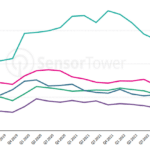Meta stated on Tuesday that it will lay off 10,000 employees and close about 5,000 more vacant positions that it had not yet filled.
The news, which makes Meta the first Big Tech company to disclose a second wave of large layoffs, comes four months after the company announced an 11,000-job reduction, or 13% of its workforce. As a result, Meta has laid off or plans to lay off almost a quarter of its employees since the end of 2022.
CEO Mark Zuckerberg told employees that most of the layoffs will be announced in April and May, and some will last until the end of the year. “In a small number of cases, it may take through the end of the year to complete these changes,” Zuckerberg said. “Our timelines for international teams will also look different, and local leaders will follow up with more details. This will be tough and there’s no way around that.”
The company intended to further cut the size of the recruitment staff, which had been impacted particularly hard by the October layoffs. Restructurings in the technology group would be disclosed in late April, with business group layoffs following in May.
“For most of our history, we saw rapid revenue growth year after year and had the resources to invest in many new products. But last year was a humbling wake-up call,” Zuckerberg said.
“I think we should prepare ourselves for the possibility that this new economic reality will continue for many years.”
While Zuckerberg did not go into detail about what sorts of positions or lower priority projects will be cut, Meta announced yesterday that it was discontinuing support for NFTs on Instagram and Facebook in order to focus on other monetization activities.
Zuckerberg, in his memo today, also mentioned “flattening” the numerous entities and divisions that make up Meta Platforms Inc. firm, which will imply reducing certain management levels.
“It’s well-understood that every layer of a hierarchy adds latency and risk aversion in information flow and decision-making,” Zuckerberg wrote. “Every manager typically reviews work and polishes off some rough edges before sending it further up the chain. In our Year of Efficiency, we will make our organization flatter by removing multiple layers of management. As part of this, we will ask many managers to become individual contributors. We’ll also have individual contributors report into almost every level — not just the bottom — so information flow between people doing the work and management will be faster.”







Comments
Loading…